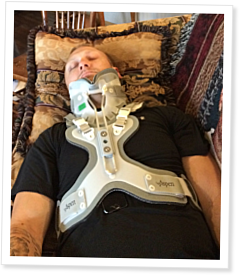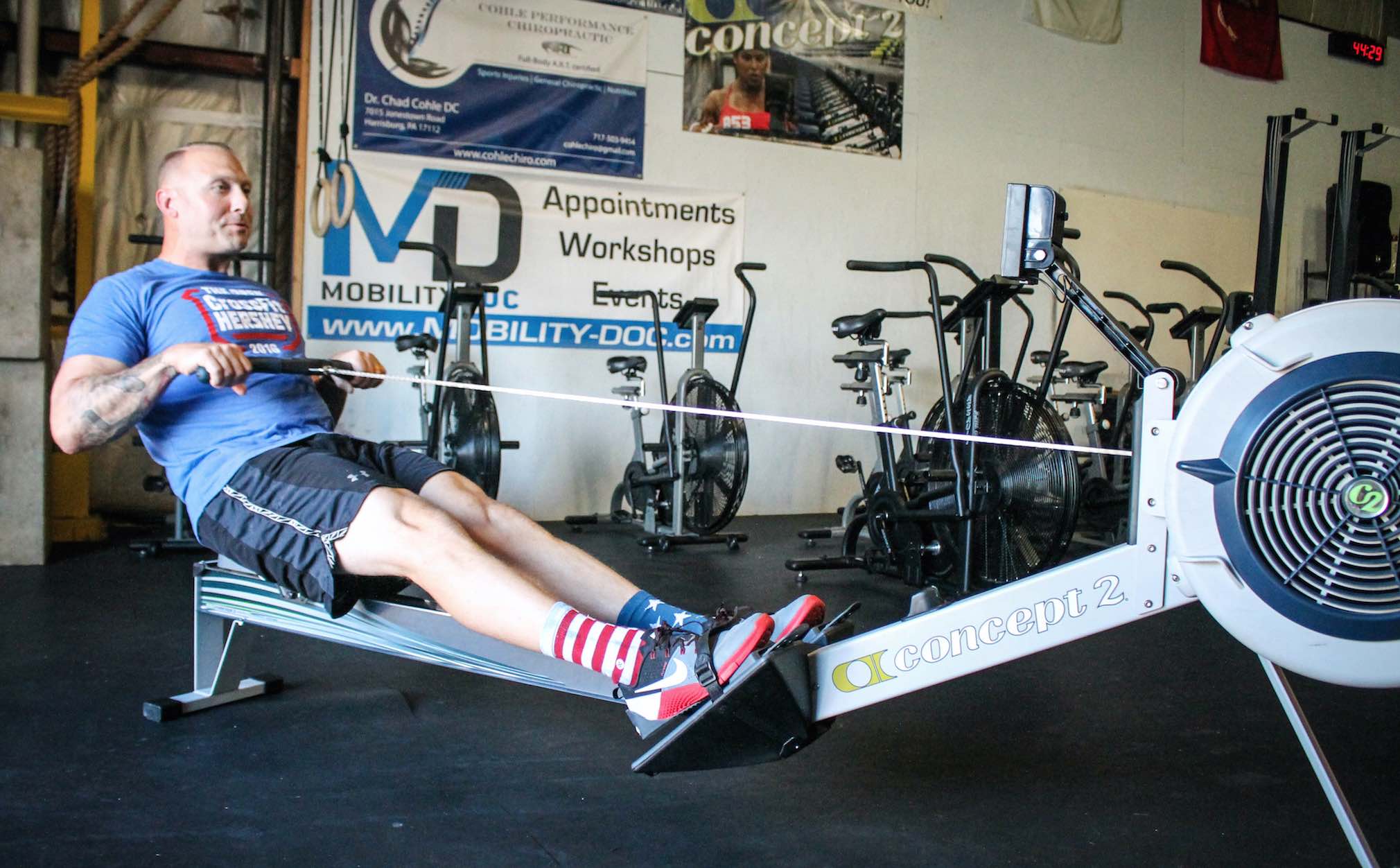
A big, strong back saved a retired Marine’s life after a 25-foot fall broke four of his vertebrae.
Jeremy Magee has been in combat twice: once in 2003 with the Marine Corps and then again in 2010 with the Pennsylvania National Guard. Both times in Iraq. He knows what it’s like to fear for his life.
“Not many things surprise me or take my breath away, by any means,” explained the 36-year-old air-traffic controller.
But a day in mid-October 2014 did.
Magee took his then-12-year-old son out for a typical hunting trip about half a mile from his mother’s house in Martinsburg, Pennsylvania. The borough of 2,000 people sits about 100 miles east of Pittsburgh. The area is heavily wooded and teeming with deer.
He hung two tree stands—one for his son and one for himself. Magee watched as his son climbed in and secured his safety belt. Then he stepped onto his own tree stand, leaning “very lightly” onto the same branch he had used to brace himself while on his son’s stand. Magee worked to secure his own safety belt. That’s when the branch snapped, dropping him about 25 feet onto his right side.
“Most of the impact was on my head and neck,” he remembered.
Magee was knocked out for a few seconds. He awoke to see his son descending from the tree stand.
“Are you OK?” his son asked.
Magee did a self-assessment.
“I wiggled my toes and told him, ‘Yeah, I think I’ll be all right.’”
With his son’s help, Magee got to his feet. He knew he had to get to a hospital. But first he had to get back to his mom’s house.
“That half mile was the longest half mile of my life.”

His mother took him to the nearest ER, Nason Hospital in Roaring Spring, a small facility “about the size of my house,” Magee said. It was unequipped for Magee’s injuries, so an ambulance took him about 30 miles north to UPMC Altoona hospital. There, doctors told him he had a severe concussion and four broken vertebrae; they feared damage to his spinal cord.
A slew of medical staff examined Magee, including an ER doctor and a spine surgeon. What they discovered was good news: Magee’s spinal cord was unharmed. Surgery would not be required.
“Well, sir, if you didn’t have the muscle mass that you do in your back and the strength you do in your back, I would not hesitate to say you would have died out there and at the very minimum you would be paralyzed,” Magee said one doctor told him.
Magee had started CrossFit nine months earlier.
“That muscle, that density helped protect him from just shattering his back and having no hope,” said CrossFit Hershey owner Tim Steel, who coaches Magee.
Before CrossFit, Magee’s workouts comprised traditional Army protocol: running, sit-ups, push-ups—a regimen he now calls “mundane.”
A week following his accident, Magee was back at work; an additional week after that, he was back at CrossFit Hershey. For four weeks, Magee wore a body brace that covered the length of his ribs and went up to his neck. Still, he managed to get to the box for time on the stationary bike. After two weeks of that, Steel added a load of mobility work.
“We weren’t stupid. I’m conservative with things,” Steel said. “We went by feel. He didn’t lift heavy for a while.”
Today, Magee is training to compete at next year’s CRASH-B rowing competition, aiming for a 2,000-meter time under 6:20.

And when pointedly asked whether it was CrossFit or his military training that saved his life that day in October 2014, Magee didn’t hesitate.
“I definitely would attribute it to CrossFit. … The military doesn’t, in any of the branches that I’ve been in, cover in detail the amount of physical fitness and exercise that encompasses what CrossFit is.”
About the Author: Andréa Maria Cecil is assistant managing editor and head writer of the CrossFit Journal.
Photo credits (in order): Courtesy of Jeremy Magee, Courtesy of CrossFit Hershey
No comments:
Post a Comment